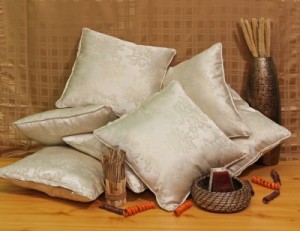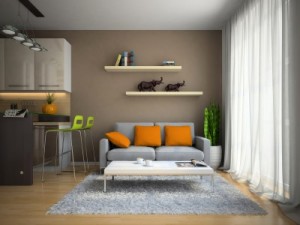 When we look at design grammar, it’s the adjectives and adverbs that liven up a sentence the way accessories make a room more interesting.
When we look at design grammar, it’s the adjectives and adverbs that liven up a sentence the way accessories make a room more interesting.
Even with no furniture, the accessories in the photo to the left create an inviting impression. Think of these finishing touches as developing the personality of a room. They may be functional, but their primary purpose is simply design, the way adjectives simply fill out whatever image a sentence makes.
 Take a look at the room to the right. Imagine it without the pillows, rug, plants, and books and elephants on the shelves. OK, let’s do it with language. Compare “the dog barked when its owner came home” with “the happy old dog barked joyfully when his veteran owner came home from Iraq.” One gives you information and the other tells you a story.
Take a look at the room to the right. Imagine it without the pillows, rug, plants, and books and elephants on the shelves. OK, let’s do it with language. Compare “the dog barked when its owner came home” with “the happy old dog barked joyfully when his veteran owner came home from Iraq.” One gives you information and the other tells you a story.
Without the adjectives and adverbs in this room, you have a series of grey tones and simple lines. Now, it’s more trouble to add accessories or turn a simple piece of information into a story, but taking the effort helps you create a space that people notice and a story that people want to listen to.
People used to call unusual accessories conversation starters. They can tell people something about you or your interests. They may define you to visitors as traditional or modern in your style and thinking. They may be remembrances of travel or your hobbies. Ask yourself, are your spaces interesting enough that people will want to read more when they walk in? What stories do you want your home to tell?

